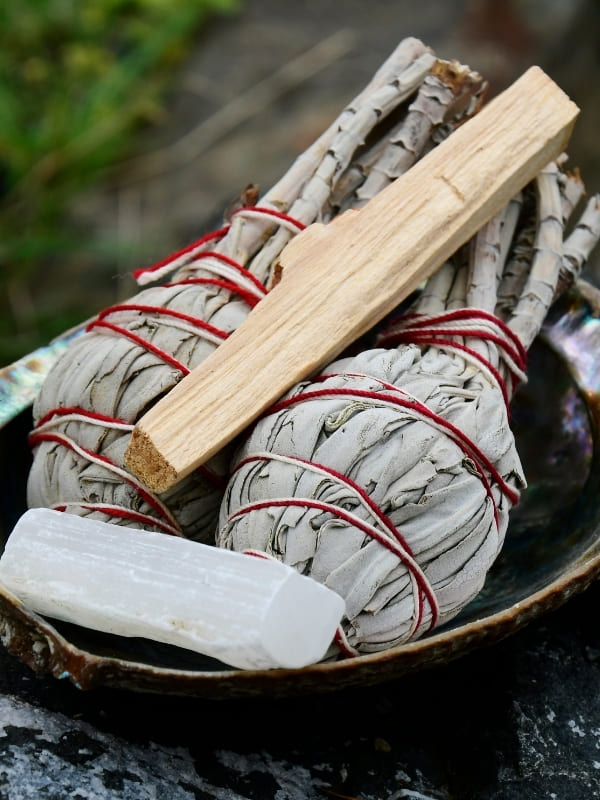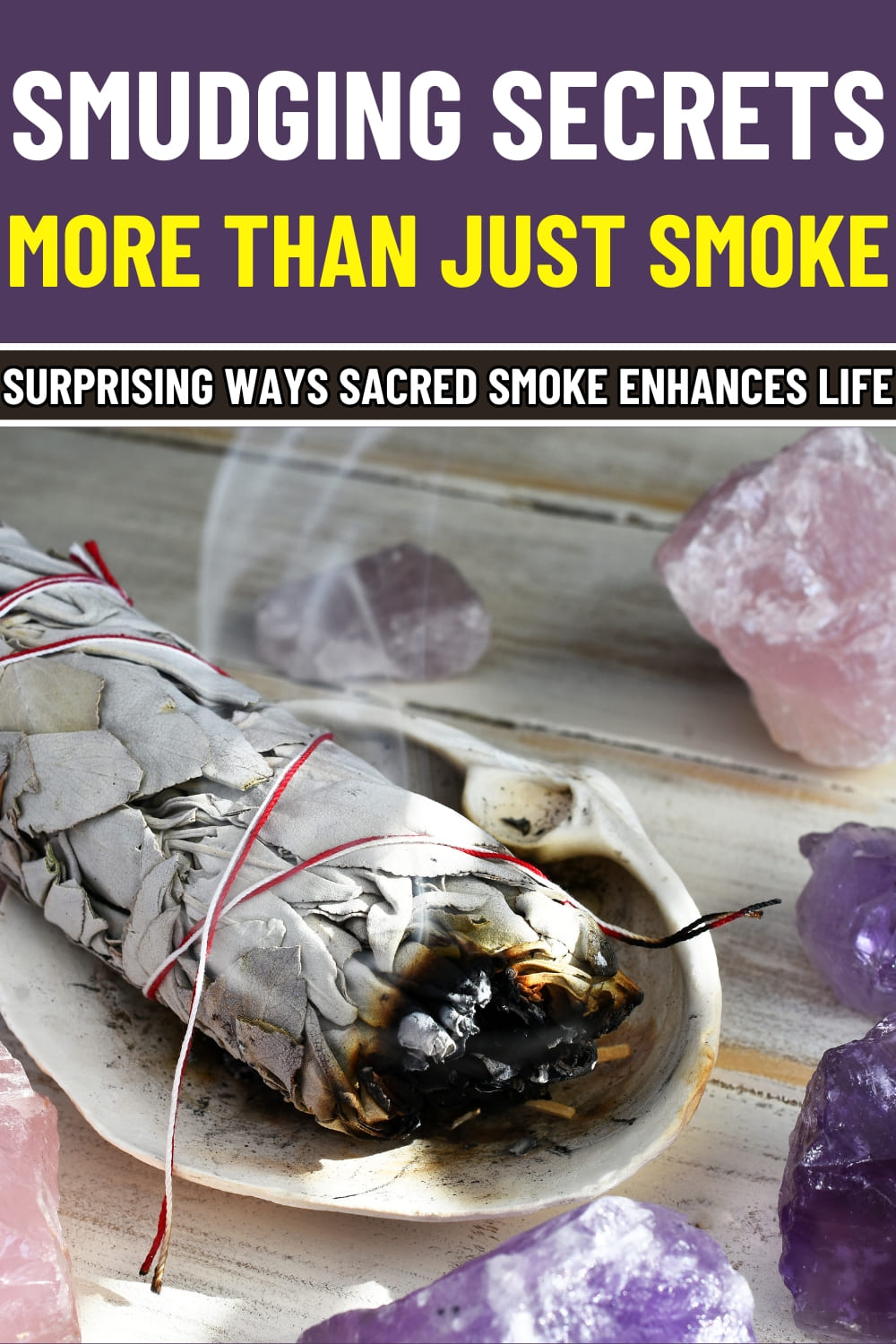Have you ever walked into a space that just felt heavy? Maybe after a stressful day, a heated argument, or simply a long period of stagnant energy? That’s where smudging comes in, a centuries-old practice believed to clear the air, refresh the mind, and even improve physical health.
Smudging involves burning sacred herbs, such as sage or palo santo, to purify surroundings and invite positive energy. But this ritual is more than just spiritual; it’s backed by science, too!
Studies suggest burning herbs releases antimicrobial compounds that purify indoor air and may even influence mood and mental clarity. Let’s explore the fascinating health benefits and how you can use this practice to elevate your well-being.
Health Benefits of Smudging
1. Purifies the Air and Eliminates Toxins
One of the most impressive benefits of smudging is its ability to cleanse indoor air. Studies show that burning medicinal herbs like white sage releases negative ions, which bind to airborne pollutants, reducing allergens, bacteria, and even mold spores.
A 2007 study published in the Journal of Ethnopharmacology found that smudging with medicinal herbs reduced airborne bacteria by up to 94% within an hour of a natural air purifier without harsh chemicals! Regular smudging can help create a cleaner, fresher environment, especially for those sensitive to dust and pollutants.

2. Reduces Stress and Promotes Relaxation
If you’re feeling overwhelmed, smudging can act as a natural stress reliever. The aroma of burning sage or palo santo stimulates the olfactory system, triggering a relaxation response in the brain.
Research suggests that inhaling sage smoke increases serotonin production, a neurotransmitter linked to mood regulation. Many people report feeling calmer and more balanced after smudging, making it a great ritual before meditation, yoga, or winding down for the evening.
3. Boosts Cognitive Function and Mental Clarity
Ever notice how certain scents can sharpen your focus? Smudging with herbs like rosemary or cedar has been linked to improved cognitive function. Rosemary, in particular, contains compounds like 1,8-cineole, which is known to enhance memory and mental clarity.
A study in Therapeutic Advances in Psychopharmacology found that inhaling rosemary oil improved cognitive performance by 7-15%, making smudging an excellent practice for productivity, study sessions, or creative brainstorming.

4. Enhances Sleep Quality and Clears Negative Energy
Burning lavender or mugwort releases soothing compounds that promote relaxation and deeper sleep. Some believe that smudging also removes negative energy, reducing nightmares or uneasy feelings in the bedroom.
The calming effects of smudging can prepare your mind and body for rest, making it a simple and natural sleep aid for those struggling with insomnia or anxiety.
5. Supports Respiratory Health
Surprisingly, smudging may have benefits for respiratory health when done in moderation. Herbs like eucalyptus and sage contain antimicrobial properties that help clear congestion and soothe irritated airways.
Some Native American traditions use smudging as a remedy for colds, believing that inhaling the smoke helps cleanse the lungs. While excessive smoke inhalation can be irritating, light, occasional smudging in a well-ventilated space may support better breathing.

6. Balances Mood and Alleviates Anxiety
Smudging has long been associated with energy cleansing, but science also points to its potential mood-boosting effects. The compounds in sage and palo santo act as mild antidepressants by influencing brain chemistry.
A study in Advances in Mind-Body Medicine found that sage contains compounds that interact with GABA receptors in the brain, similar to anti-anxiety medications. This could explain why smudging is often used in spiritual and healing rituals to promote emotional balance.
7. May Enhance Immune Function
Burning certain herbs releases antibacterial and antiviral compounds into the air. For example, cedarwood smoke has been traditionally used in Native American healing ceremonies to promote immunity and protect against infections.
By reducing airborne pathogens and stress levels, both of which impact immune health, smudging may offer subtle but valuable support for your body’s defenses.

How to Smudge: Step-by-Step Guide
Ready to try smudging for yourself? Follow these simple steps to experience the benefits:
- Choose Your Herb: White sage is the most popular, but palo santo, cedar, and lavender are also excellent choices.
- Set an Intention: Before lighting your smudge stick, take a moment to set an intention, whether it’s clearing negative energy, reducing stress, or simply refreshing your space.
- Light the Smudge Stick: Use a candle, match, or lighter to ignite the tip of the herb bundle. Let it burn for about 20 seconds, then gently blow out the flame, allowing the smoke to rise.
- Walk Through Your Space: Hold the smudge stick at a slight angle and move it around your room, allowing the smoke to drift into corners and doorways. If smudging yourself, wave the smoke around your body from head to toe.
- Extinguish Safely: When finished, press the burning tip into a fireproof bowl or sand to fully extinguish it. Never leave smoldering herbs unattended.
For best results, smudge regularly once a week or whenever you feel the energy in your space needs a refresh!

Cautions and Precautions
Avoid excessive smoke inhalation, especially if you have asthma or respiratory sensitivities. Always smudge in a well-ventilated area.
Pregnant women and individuals with respiratory conditions should consult a healthcare provider before using smudging as a remedy.
Test for allergies before smudging, especially if using new herbs. Some people may experience irritation from certain plant compounds.
Disclaimer
This article is for informational purposes only and is not a substitute for professional medical advice. If you have any health concerns, consult a healthcare provider before trying smudging as a remedy.

Smudging for Health: How This Ancient Practice Can Improve Your Well-Being
